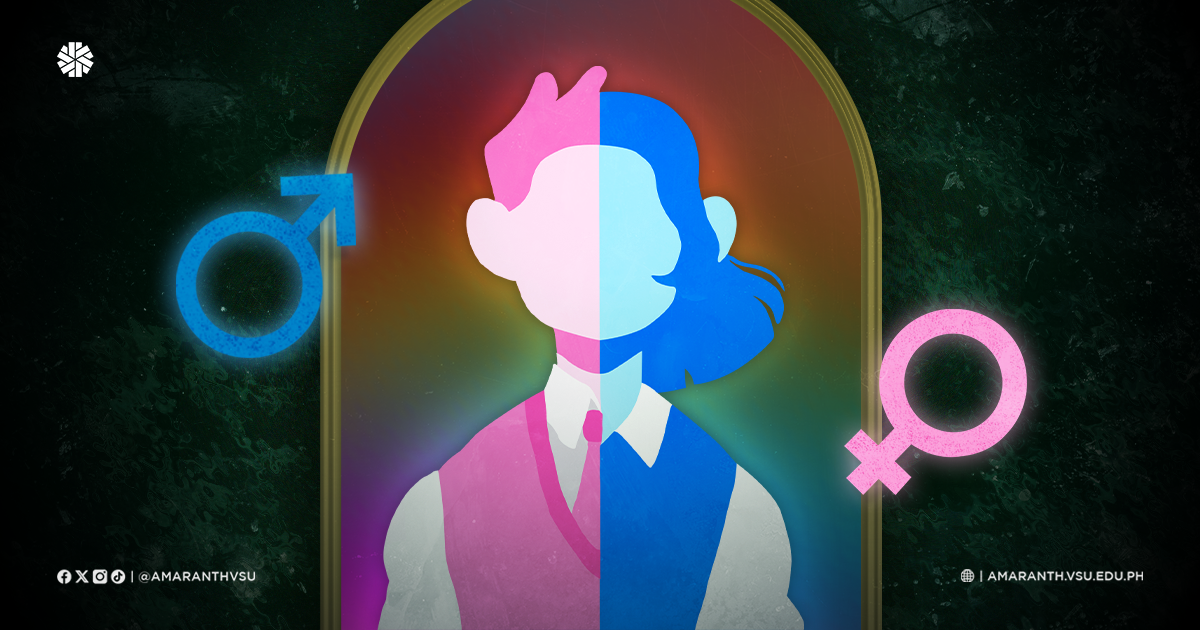As we mark this month of June to celebrate young and beautiful pride, we should all remember what pride stands for - a fight for the rights of gender self-expression and to honor the ongoing struggles for justice and gender equality, not just among non-binaries but for everyone.
The walks, talks, and all the works for the right to sexual orientation, gender identity, and gender expression (SOGIE) have been and still are but smooth sailing. Although their experiences have improved, not everyone rides in the same boat. Even in the time of information, the concept, rather the discipline of Gender and Sex remains a puzzle to the majority despite it being technically obvious.
Not everyone can comprehend the complexity of one’s identity as much as the complexity of the mind.
Your Sex and Your Gender
To begin, let’s briefly define the often confused (to some) terms of sex and gender. Sex is the biological identity of someone based on their anatomy and chemical makeup, usually categorized as male or female. On the other hand, gender is what you identify as personally, socially, and culturally, this is how you perceive and present yourself. Both refer to your identity as a human being, neither more nor less.
Many are comfortable with themselves. Many are proud of their gender identity. But some find themselves unsure of who they really are. Sure one’s sexual orientation may be obvious, but gender is a life’s journey.
What is Gender Dysphoria?
Imagine this, someone gave you a pair of shoes - you wear it, you use it. Some people love their shoes, others are just fine, content and comfortably fitted. But some people’s shoes don't fit really well, they might find it tight or maybe loose, regardless, they are not comfortable to wear. Others may also love it but as time passes, their feet grow and the shoes are not right for them. On a similar note, some people also eventually experience the feeling of a mismatch between their assigned sex at birth and their own experienced gender, this is what we identify as gender dysphoria.
As defined by the Diagnostic and Statistical Manual of Mental Disorders (DSM 5) by the American Psychiatric association (APA), gender dysphoria (GD) is a ‘marked incongruence between their experienced or expressed gender and the one they were assigned at birth’. This condition is manifested not just by confusion, but by a strong desire to be of the other gender. GD is commonly diagnosed among teenagers as it is also developed along the maturity of the sexual characteristics, as it is often associated with puberty.
Gender dysphoria is not an illness but rather a disorder as this causes a domino effect within personal and social relationships of an individual. The idea of being a nonconformist to the traditional heteronormativity causes stigma and a clashing of beliefs. This leads to feeling bad for themselves, giving them anxiety, depression, possible substance abuse, and leading to self-harm.
The disorder of gender dysphoria is manifested as an incongruence and strong desire of hate and want related to their sex characteristics. Meaning to say that they are disgusted by their own anatomy. They have a strong desire to rid their own primary (genitalia) and secondary (breast or deep voice) sex characteristics (e.g. genitalia) and to have the opposite sex’s sexual characteristics. They also desire to be the other’s sex and to be treated as such, however, these desires and dissatisfactions lead to an unhealthy level of self-concept and self-identity.
CHECKPOINT: Gender dysphoria is not similar to homosexuality. The concept of homosexuality refers to your feelings, behavior, and identity towards an individual while dysphoria is an unhealthy desire to the point of self-destruction. It is important to identify the difference between the two and to support individuals in their personal journeys towards self-identity.
Is it the same as being transgender?
Technically, no. Gender dysphoria is commonly identified among transgender however not all transgender have gender dysphoria. Transgender refers to the individuals whose gender identity differs from their assigned sex. Not every transgenders experiences gender dysmorphia, some can be comfortable with their gender identity without feelings of mismatched or distress of their self-identity.
So, what can we do?
Gender dysphoria treatment is approached through psychological counselling or by a behavioural health treatment provided by licensed professionals. It is a personal journey of spiked roads and should be approached medically; one’s sense of self-identity should be explored with help. Other methods also come in various techniques such as genital tucking or chest padding to ease their gender dysphoria. There is also hormonal treatment and surgical therapies available.
If you know someone with gender dysphoria and don’t really know what to do, what you can do is to create a safe and comfortable environment for their own personal journey. It is also helpful to actively listen to their feelings and experiences, and respect their own identity. That’s the least we can do.
Currently, there is still limited information or well-documented cases regarding gender dysphoria, as discussions and research on sex and gender are historically approached as cultural matters rather than scientific ones. Even in this progressive time, innovation toward SOGIE is still hindered by society’s lingering prejudice as the topic is considered sensitive and taboo.
But, the time is still early, and it is still a step forward as we look towards a more progressive future.


